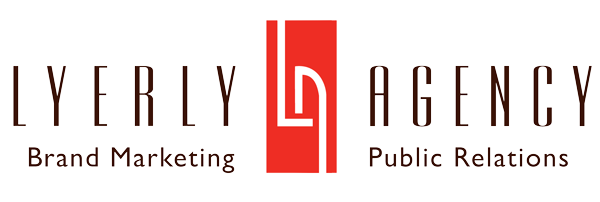As posted in The Gaston Gazette:
(4/27/14) BELMONT, N.C. – Did you know that yellow is often considered a color that stimulates creativity? Or that blue can elicit feelings of strength, trust and dependability? Colors instantaneously evoke emotions and, as a result, help convey various messages without the assistance of a single word. Within the communications field, this psychological concept is not to be overlooked when marketing your business or product. Choose your color palette wisely and your company can benefit.
But how can you best implement harmonious hues into your brand? There’s no single secret to unhinging the psychology of color. However, it is more complex than choosing a color palette simply pleasing to the consumer’s eye. Whether it’s pale pink or fluorescent green, these shades will become your identity alongside your name, your logo, your tagline, and they must adequately convey your image in the same manner as these other pivotal branding tools. This color palette decision is one to be taken seriously.
Colors communicate more than you initially assume. A brand’s selected scheme can become ubiquitous with its image. Just as a black and orange pairing generates thoughts of Halloween, the precise red, white and gold hues creating McDonald’s arches and logo will often elicit ideas of its brand among familiar customers. Research indicates color creates a swift judgment of your product, your company and your brand more than 90% of the time. So, careful consideration of a color palette must be taken.
There are a few easy-to-implement tactics that can translate your simple reds and greens into marketing profitability and persuasive communications. Many exist, but we suggest the following as you dive into the rainbow:
- Be different. Look at your competition, whether a company or specific product. Examine your business’ surroundings. Strive to differentiate yourself among the others. If your immediate competitor’s logo utilizes a dominant green, place the opposite color in your scheme. Studies note that consumers often notice color first and foremost; you certainly don’t want an individual reaching for your product on the shelf, but grabbing the competitor’s simply because you both chose yellow. Stand out among the rest and attract attention with an eye-catching, unique color palette.
- Appropriateness is perceived. As always within communications, cater to your audience. It’s easy to be different, but don’t forget your audience when choosing those distinct colors. Pastel shades may not be appropriate for a male audience or a company specializing in financial services, but may work well for a young demographic or a product intended for infants. As you aim to be different, remember that audiences react differently to colors as well. Also note that varying cultures view the same color in vastly opposite ways – this is key to consider if your company operates globally. Does your selected palette properly fit your targeted audience as well as what services or products are being sold? Market yourself appropriately in terms of color for the best possible results.
- Avoid trends. As with fashion and music, colors trends come and go. The term “ombre” was popular shortly ago – a shading technique, graduating a color in its tone – but is currently fading in favor of other styles. Fight the fads; they usually fade. Create a color brand that will remain reliable for years if not the entire length of your product or company. If a consumer will notice your logo color first, he or she will also notice your trend usage once it becomes dated. Unfortunately, the perception that your brand is dated can lead to decreased sales. Stay ahead in marketing yourself with color by fashioning a timeless color palette.
- One color or five?Before diving head first into color selection, choose if you want a diverse palette or something simple. More often than not, a scheme that includes multiple colors works best. Here at Lyerly, we typically recommend a color palette that consists of four to five colors. The brand logo often comprises only two or three of those tones with additional highlight colors incorporated to provide variety and interest throughout your marketing materials – website, printed collateral, social media, potential products, etc. Sticking to this defined color scheme as well as specific design elements crafted in conjunction with the palette produce a usable and recognizable “family of materials.”
- Think psychologically. From red to violet, each of the rainbow’s spectrum colors – in addition to several others – is attributed a handful of psychological emotions per research on human response to the tinted tones. Red, an attention-grabbing shade, is typically associated with heat and intensity. It’s a color that many suggest stimulates appetite, hence its ubiquitous use among fast food restaurants, such as McDonald’s, Burger King, Wendy’s and Pizza Hut. In stark contrast, blue can suggestively curb appetite and is tied to feelings of calmness and responsibility. Some companies employing this hue are Blue Cross & Blue Shield and AT&T. Consider the previous tips, including audience. Research the psychological ties behind various colors and piece together a perfect palette that tugs on the emotions of potential consumers.
Although it will take a bit of time and research to choose a proper, fitting color scheme for your brand, the process will reap lasting benefits. However, selecting the wrong colors – whether inappropriate or too trendy, or simply hues evoking the exact opposite emotions – could cost your company significantly. No matter your industry or product, take the time necessary to consider this weighty decision and invest that mental capital wisely toward a color palette that works in your favor. From the calm, refreshing nature of green tones to the purity and cleanliness of white, the rainbow of hues is in your hands.
Elaine and Melia Lyerly share their 35+ years of marketing, advertising, public relations and brand strategy experience with readers each month in a column published by The Gaston Gazette. See this month’s edition at http://bit.ly/1v9rHbq.
